Post-Traumatic Growth and Supplements That Support It
💔 Introduction: Turning Pain Into Growth
Trauma changes you — but not always only for the worse.
For many, deep emotional pain becomes a catalyst for transformation. It cracks open the old self, forcing a confrontation with what truly matters. Out of that process, some people experience something remarkable: post-traumatic growth (PTG).
PTG doesn’t mean the trauma was good. It means the mind and body found a way to reorganize around strength, awareness, and purpose instead of remaining trapped in fear.
But to get there, your nervous system must heal — and that takes more than willpower. It requires physiological repair, emotional processing, and, sometimes, nutritional and supplement support to stabilize the brain and body during recovery.
This article explores how trauma rewires the body, how growth can emerge from it, and which natural supplements and nutrients can support emotional resilience, focus, and balance during that rebuilding phase. 🌿
Looking for supplements for This? Click here.
🧠 Part 1: What Is Post-Traumatic Growth?
🌿 Redefining Healing
Post-traumatic growth is a term coined by psychologists Richard Tedeschi and Lawrence Calhoun in the 1990s. They observed that some people who endured profound trauma — war, illness, loss, or abuse — didn’t just recover; they evolved.
They reported:
💫 Greater appreciation for life
❤️ Deeper empathy and connection
💪 Increased personal strength
🌙 Spiritual or existential insight
🔄 New priorities and purpose
In essence, trauma can become the raw material for transformation.
🔬 The Biology of Growth After Trauma
PTG doesn’t mean the absence of pain or PTSD symptoms. It’s a parallel process: healing the nervous system while discovering meaning in what happened.
Here’s how trauma changes the body — and how growth can begin.
⚡ 1️⃣ The Body Under Siege
During trauma, the amygdala (the brain’s fear center) goes into overdrive, flooding the system with cortisol and adrenaline.
If that state persists, it leads to:
Hypervigilance
Sleep disturbances
Emotional numbness
Chronic fatigue
This is the sympathetic nervous system stuck in overdrive — your body still thinks it’s in danger.
🌬️ 2️⃣ The Path Back: Nervous System Regulation
Recovery and growth begin when the parasympathetic nervous system (rest, digest, restore) reactivates.
This happens through therapy, breathwork, mindfulness — and biochemical repair.
Supplements can’t erase trauma, but they can help rebuild the neurochemical foundation that supports calm, sleep, focus, and emotional resilience.
💫 3️⃣ The Neuroplasticity Window
When the nervous system begins to stabilize, the brain becomes plastic again — capable of forming new connections and meanings.
This “window of neuroplasticity” is where growth happens.
You start to integrate the story of your trauma in a new way:
not “this broke me,” but “this shaped me.”
Nutrients, adaptogens, and amino acids that support neuroplasticity can help keep this healing phase stable and effective.
🌿 Part 2: Supplements That Support Emotional Recovery and Growth

Each supplement below targets a specific pillar of post-traumatic healing: nervous system balance, cognitive function, emotional regulation, and long-term resilience.
🌬️ 1️⃣ Magnesium — The Nervous System Stabilizer
When stress hormones rise, magnesium levels drop. This mineral is crucial for over 300 biochemical reactions, including nerve function and GABA activation (the calming neurotransmitter).
How it helps:
Reduces anxiety and restlessness
Improves sleep quality
Calms the fight-or-flight response
Supports muscle relaxation and mood regulation
Best forms:
Magnesium glycinate (calming and well-tolerated)
Magnesium L-threonate (crosses the blood-brain barrier for cognitive support)
💊 Dosage: 200–400 mg daily (preferably at night).
Why it matters for PTG:
Trauma survivors often live in high-alert states; magnesium helps the nervous system relearn safety.
🧘 2️⃣ L-Theanine — Calm Without Sedation
Found naturally in green tea, L-theanine increases alpha brain waves, the rhythm of relaxed alertness.
How it helps:
Reduces physiological signs of stress (heart rate, tension)
Enhances focus and working memory
Balances glutamate (overactive during trauma)
💊 Dosage: 200–400 mg daily.
Best stack: L-theanine + magnesium glycinate for emotional calm with clarity.
💚 3️⃣ Omega-3 Fatty Acids — Brain Repair and Emotional Stability
Trauma and chronic stress damage neuronal membranes and reduce serotonin sensitivity. Omega-3s (EPA + DHA) rebuild those membranes and enhance neurotransmission.
How they help:
Reduce inflammation linked to depression
Improve mood and cognitive flexibility
Enhance emotional regulation
💊 Dosage: 1,000–2,000 mg EPA+DHA daily.
Why it matters:
Healthy neuronal membranes = better communication between brain regions that regulate emotion and reasoning.
🌿 4️⃣ Ashwagandha — Cortisol Regulation and Emotional Balance
Ashwagandha is an adaptogen that reduces cortisol, improves sleep, and restores HPA (hypothalamic–pituitary–adrenal) axis balance — often disrupted after trauma.
How it helps:
Lowers stress reactivity
Improves resilience and mood
Reduces intrusive thoughts
💊 Dosage: 300–600 mg (KSM-66® or Sensoril® extract).
Best stack: Ashwagandha + omega-3s + magnesium for long-term emotional recalibration.
🌸 5️⃣ Rhodiola Rosea — For Emotional Energy and Motivation
After trauma, fatigue and apathy are common. Rhodiola helps restore vitality without overstimulation.
How it helps:
Enhances energy metabolism
Reduces burnout
Increases serotonin and dopamine balance
💊 Dosage: 200–400 mg early in the day.
Best for: People emerging from the depressive or numb phase of trauma recovery who need renewed drive.
💫 6️⃣ Saffron Extract — For Mood and Hope
Saffron (Affron®) is one of the most evidence-backed natural mood enhancers. It increases serotonin and dopamine while lowering anxiety markers.
How it helps:
Improves optimism and motivation
Reduces mild-to-moderate depression
Supports emotional rebalancing after chronic stress
💊 Dosage: 15–30 mg standardized extract daily.
Best stack: Saffron + omega-3s + magnesium = emotional stability + cognitive clarity.
🌿 7️⃣ Lion’s Mane Mushroom — Neuroplasticity and Cognitive Renewal
Trauma can impair hippocampal function, affecting memory and focus.
Lion’s Mane promotes nerve growth factor (NGF), enhancing neurogenesis and mental clarity.
How it helps:
Restores mental sharpness
Supports nerve regeneration
Improves emotional resilience through better brain connectivity
💊 Dosage: 500–1000 mg extract (fruiting body).
🌙 8️⃣ Glycine — Sleep and Emotional Regulation
Glycine is a calming amino acid that supports neurotransmission and helps lower body temperature for deeper sleep — essential for trauma recovery.
How it helps:
Improves sleep depth
Reduces nighttime rumination
Supports memory consolidation and healing
💊 Dosage: 3 g before bed.
🌸 9️⃣ N-Acetyl Cysteine (NAC) — Detox and Cognitive Resilience
Trauma-related stress increases oxidative damage in the brain.
NAC boosts glutathione, your body’s master antioxidant, while modulating glutamate (key in anxiety and compulsive thought patterns).
How it helps:
Supports emotional control
Reduces impulsivity and mental fatigue
Protects neurons from stress-related damage
💊 Dosage: 600–1200 mg daily.
🌿 10️⃣ B-Complex Vitamins — Cellular Energy and Neurotransmitter Support
B vitamins are essential for producing dopamine, serotonin, and GABA — all affected by trauma and chronic stress.
How they help:
Combat fatigue and brain fog
Support adrenal recovery
Improve mood and motivation
💊 Best forms:
B6 as P-5-P
B12 as methylcobalamin
Folate as methylfolate (not folic acid)
Looking for supplements for This? Click here.
💬 Part 3: Mind–Body Integration — Beyond Pills
Supplements help rebuild the biological foundation, but growth happens through integration — emotional, physical, and spiritual alignment.
Here’s how to connect the dots.
🧘 1️⃣ Therapy + Nutrition = Synergy
Therapy (like EMDR, somatic experiencing, or CBT) helps process trauma stories.
Supplements stabilize brain chemistry so the therapy can land.
Example synergy:
Magnesium + L-theanine → calm during EMDR
Omega-3s + Lion’s Mane → enhanced cognitive recovery after emotional release
Looking for online therapy ? Click Here.
🌬️ 2️⃣ Breathwork and Vagus Nerve Activation
Gentle breathwork (box breathing, 4-7-8) or humming activates the vagus nerve, shifting the nervous system toward parasympathetic calm.
Combine with magnesium or ashwagandha for deeper grounding.
Want to try Breathwork? Click Here.
💤 3️⃣ Sleep as a Rebuilder
REM sleep is where emotional integration happens.
The brain replays memories without adrenaline, rewiring emotional associations.
Sleep-supporting nutrients like glycine, magnesium, and saffron amplify this process, making emotional processing less draining.
☀️ 4️⃣ Morning Light and Movement
Sunlight exposure within 30 minutes of waking resets circadian rhythm, balances cortisol, and signals safety to the body.
Movement — even gentle stretching — improves neuroplasticity and mood-regulating neurotransmitters.
💫 Part 4: Supplements for Meaning, Motivation, and Purpose

Post-traumatic growth isn’t just about peace — it’s about purpose.
Once emotional stability returns, your focus shifts toward rebuilding your sense of meaning.
Certain nootropics and adaptogens can enhance this higher-order process.
🧠 1️⃣ Alpha-GPC or Citicoline — Cognitive Clarity and Motivation
These choline donors fuel acetylcholine, supporting focus and mental drive — especially useful for rebuilding after emotional burnout.
💊 Dosage: 300–600 mg daily.
🌿 2️⃣ Panax Ginseng — Resilience and Motivation
Known for vitality and focus, ginseng supports dopamine balance and combats apathy that often follows trauma recovery.
💊 Dosage: 200–400 mg standardized extract.
🌸 3️⃣ CoQ10 + PQQ — Cellular Energy and Mental Endurance
Trauma drains mitochondrial function. These compounds rejuvenate cellular energy and mental stamina.
💊 Dosage:
CoQ10: 100–200 mg
PQQ: 10–20 mg daily
🌙 4️⃣ S-Adenosyl Methionine (SAMe) — Mood and Motivation
SAMe supports methylation, serotonin metabolism, and liver detoxification. It may help transition from survival mode to thriving.
💊 Dosage: 200–400 mg daily (morning).
🌱 Part 5: The Stages of Post-Traumatic Growth
Understanding the phases helps you match supplements and habits to your healing timeline.
🩵 Stage 1: Safety and Regulation
Goal: Calm the body and re-establish safety.
Focus on: Magnesium, L-theanine, glycine, and therapy.
🌿 Stage 2: Emotional Stabilization
Goal: Rebuild neurotransmitter balance and sleep.
Focus on: Ashwagandha, saffron, omega-3s, B-complex.
🔥 Stage 3: Energy and Cognitive Renewal
Goal: Overcome fatigue, restore focus.
Focus on: Rhodiola, Lion’s Mane, CoQ10, Alpha-GPC.
🌸 Stage 4: Meaning and Growth
Goal: Reconnect to purpose and joy.
Focus on: Saffron, adaptogens, and nootropics that enhance clarity.
🌿 Part 6: Warnings and Personalization
Supplements are powerful tools but not a replacement for therapy, connection, or self-compassion.
⚠️ Key guidelines:
Consult a healthcare provider, especially if on antidepressants or anti-anxiety meds.
Introduce one supplement at a time to monitor effects.
Track mood, sleep, and focus over time.
Pair supplementation with consistent nutrition (omega-3 fats, leafy greens, whole grains).
🌈 Part 7: The Deeper Lesson — Growth Is a System
Post-traumatic growth is not a miracle moment. It’s the result of thousands of micro-adjustments — in your biology, your thoughts, your habits, your self-kindness.
You repair neurons, rebuild trust, rediscover joy.
Bit by bit, the pieces come back together — and you emerge not “healed,” but rewired.
Supplements, sleep, and mindfulness simply give your body the tools to support that transformation.
Because growth is not about forgetting pain — it’s about building strength around it. 🌿💫
📚 References
Tedeschi, R., & Calhoun, L. “Posttraumatic Growth: Conceptual Foundations and Empirical Evidence.” Psychological Inquiry, 2004.
McEwen, B. “Stress, Adaptation, and the Brain.” Annual Review of Neuroscience, 2007.
Panossian, A. “Adaptogens and HPA Axis Regulation.” Phytomedicine, 2021.
Langade, D. et al. “Ashwagandha Root Extract and Stress Reduction.” Cureus, 2020.
Lopresti, A. “Saffron and Mood Regulation.” Journal of Clinical Sleep Medicine, 2019.
Wienecke, E. et al. “Magnesium and Sleep Quality.” J. Res. Med. Sci., 2016.
Sarris, J. “Nutritional Psychiatry: Nutrient-Based Mood Interventions.” World Journal of Psychiatry, 2019.
Huberman, A. “Neuroscience of Stress, Resilience, and Recovery.” Huberman Lab Podcast, 2023.
Peuhkuri, K. “Diet and Sleep: Nutrients and Sleep Regulation.” Nutrients, 2012.
Sapolsky, R. Why Zebras Don’t Get Ulcers. Holt Paperbacks, 2004.
Related Posts
-

How to Measure Your Emotional Growth Over Time
Emotional growth can’t be measured on a scale — but it can be tracked through awareness, regulation, and reflection. Learn how to monitor your emotional evolution using journaling, biofeedback, and science-backed metrics for real progress. 💫
-

The Connection Between Creativity and Resilience
Creativity and resilience share the same roots — adaptability, flexibility, and imagination. Learn how creative expression rewires your brain for strength, helping you transform stress into growth through neuroscience, art, and self-reflection. 🌿
-

Why Cycling Supplements May Improve Long-Term Resilience
Your body adapts to everything — even supplements. Discover why cycling your supplements helps prevent tolerance, boost energy naturally, and build lasting resilience by aligning with your body’s biological rhythms. 🌿
-

The Role of Biofeedback in Emotional Strength
Learn how biofeedback bridges mind and body — helping you monitor heart rate, breath, and brain activity to build emotional strength, resilience, and calm under pressure. See how science meets mindfulness for lasting control. 🌿
-

How to Stay Strong During Long-Term Stress
Long-term stress doesn’t just drain your energy — it rewires your biology. Discover science-backed ways to strengthen your body, balance your mind, and build lasting resilience through breathwork, nutrition, mindset shifts, and supplements that restore calm and focus. 💪
-

Resilience Training for Entrepreneurs
Entrepreneurship isn’t just about strategy — it’s about stamina. Discover how resilience training helps founders stay calm, clear-headed, and adaptable under pressure through neuroscience-backed habits, emotional regulation, and smart supplementation. 🌿
-

How Nootropics Can Boost Emotional Control
Emotions don’t have to control you. Discover how nootropics like L-theanine, ashwagandha, saffron, and omega-3s help balance brain chemistry, improve focus, and strengthen your ability to stay calm and composed under stress. 🌿
-

Stacking Adaptogens for Maximum Resilience
Adaptogens are nature’s stress shield — helping you stay calm, energized, and clear even under pressure. Learn how to stack herbs like ashwagandha, rhodiola, reishi, and schisandra for maximum resilience, balance, and long-term vitality. 🌿
-

How to Regain Focus After Emotional Stress
After emotional stress, your nervous system feels frayed — your focus fades, thoughts race, and calm seems impossible. Learn how to restore balance, rebuild concentration, and retrain your brain for clarity and peace through evidence-based mind–body tools. 🌿
-

The Future of Sleep Supplements
The future of sleep supplements is here — where science meets nature. Discover how next-generation formulas use adaptogens, amino acids, and biotech innovations to support deep, restorative sleep without dependency. 🌙
-
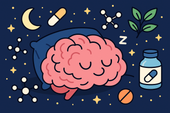
Emerging Research on Sleep and Nootropics
Can nootropics help you sleep better? Discover how compounds like L-theanine, magnesium threonate, ashwagandha, and Alpha-GPC influence neurotransmitters, circadian rhythm, and brain recovery — bridging the gap between smarter days and deeper nights. 🌙
-

New Herbal Extracts for Deep Sleep
Discover the next generation of herbal extracts for deep sleep — from saffron and magnolia to jujube and lemon balm. Learn how these plant-based compounds calm the nervous system, balance cortisol, and promote truly restorative rest. 🌙
-

Sleep Biohacking: What Works and What Doesn’t
Biohacking your sleep can sound futuristic — from red light therapy to wearables and supplement stacks. But which hacks actually help, and which are just hype? Discover the science-backed sleep strategies that truly improve rest, recovery, and brain health. 🌙
-
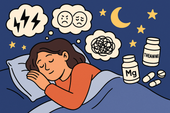
Sleep Support for People with Anxiety Disorders
💭 A restless mind can keep you up all night — thoughts spinning, heart racing, and peace feeling far away. Learn how to quiet overthinking, regulate your nervous system, and create a nightly ritual that teaches your brain to let go and rest deeply. 🌙
-
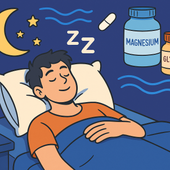
How to Fall Back Asleep After Waking Up
Waking up in the middle of the night? Learn how to fall back asleep quickly and calmly using breathing techniques, stress-reducing rituals, and natural supplements like magnesium and glycine. Restore your body’s rhythm and wake up feeling refreshed.
-
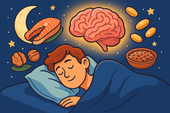
The Role of Omega-3s in Sleep Quality
-
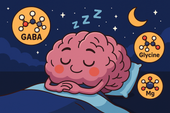
Stacking GABA and Glycine for Deeper Rest
Discover how stacking GABA and glycine can help you achieve deeper, more restorative sleep. Learn how these calming amino acids work together to relax your mind, soothe your body, and improve overall sleep quality—naturally and safely.
-

Overcoming Jet Lag with Supplements
✈️ Jet lag doesn’t have to ruin your trip! Discover how supplements like melatonin, magnesium, L-theanine, and tart cherry can help you reset your body clock faster, reduce fatigue, and recover energy naturally after long flights. 🌙
-

Managing Sleep During Times of Stress
Feeling wired and restless? Learn how to manage sleep during stressful times through nutrition, breathwork, and natural supplements like magnesium and L-theanine. Discover how to calm your nervous system and restore deep, peaceful rest—even when life feels overwhelming.
-

The Role of Magnesium for Night Cramps
Night cramps keeping you awake? Discover how magnesium helps relax muscles, balance electrolytes, and prevent painful spasms. Learn which forms work best, how to take them, and how to pair them with other nutrients for cramp-free, peaceful sleep.
-
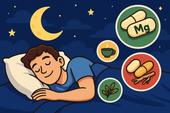
Supplements That Reduce Nighttime Awakenings
🌙 Discover science-backed supplements that help you stay asleep through the night. From magnesium and L-theanine to glycine and ashwagandha, learn how these natural compounds calm your nervous system, balance cortisol, and prevent 2 a.m. wake-ups for deeper, more restorative rest.
-
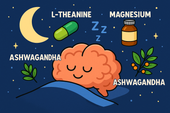
Nootropics That Promote Calm and Rest
Explore the world of calming nootropics — natural brain enhancers that promote relaxation, better focus, and deeper rest. Learn how L-Theanine, magnesium, ashwagandha, and other adaptogens help balance your nervous system, reduce stress, and support restorative sleep.
-
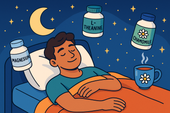
Best Natural Supplement Stack for Sleep
Discover the best natural supplement stack for deep, restorative sleep. Learn how nutrients like magnesium, L-theanine, glycine, and calming herbs such as chamomile and ashwagandha work together to relax your body, calm your mind, and improve sleep quality—naturally and safely.
-
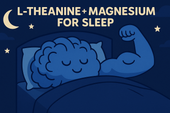
Combining L-Theanine and Magnesium for Sleep: A Calm Night, Naturally
Discover how combining L-Theanine and Magnesium can help you drift into deep, restorative sleep. Learn how this natural duo calms the mind, relaxes the body, and supports your nervous system—without grogginess the next morning.
-

How to Sleep Better After Intense Workouts
Struggling to fall asleep after a tough workout? Learn how to optimize your post-training recovery with nutrition, hydration, and science-backed sleep strategies. Discover how to calm your nervous system, balance hormones, and wake up fully recharged for your next session.
-

Ashwagandha and Valerian: A Bedtime Combo for Deep Rest and Emotional Reset
Discover the calming synergy of Ashwagandha and Valerian root, two natural sleep aids that help quiet the mind, ease anxiety, and promote deeper rest. Learn how this herbal duo supports the nervous system, balances stress hormones, and restores emotional peace — without next-day grogginess.
-
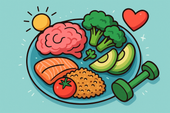
How to Create a Resilience-Boosting Diet
Discover how to build emotional and physical strength from the inside out with a resilience-boosting diet 🍎. Learn which foods stabilize your mood, how supplements like magnesium and omega-3s strengthen your stress response, and why pairing nutrition with breathwork and therapy creates lasting calm, focus, and vitality 🌿💪.
-

Best Teas and Herbal Blends for Calmness: Nature’s Way to Restore Inner Peace
Ashwagandha, the ancient adaptogenic herb, helps your body find balance during stress. Known as “Indian ginseng,” it supports cortisol regulation, boosts energy, and restores calm clarity. Discover how this powerful root promotes resilience, emotional balance, and steady vitality — one cup at a time. 🌸
-

Parenting and Emotional Strength: How to Raise Children Without Losing Yourself
Empathy is the bridge that connects hearts — the quiet power to understand, feel, and support another’s emotions without judgment. Learn how empathy strengthens relationships, enhances communication, and cultivates deeper compassion in everyday life. 🌿
-
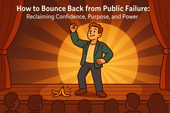
How to Bounce Back from Public Failure: Reclaiming Confidence, Purpose, and Power
Visualization is more than imagination — it’s brain training for resilience. By picturing calm, success, or healing, you activate the same neural pathways as real experience. Learn how daily visualization rewires your brain for confidence, emotional balance, and recovery from stress. ✨
-

Coping with Financial Stress Through Resilience: How to Stay Grounded When Money Feels Tight
Body awareness is the foundation of emotional resilience. By tuning into your body’s signals — tension, fatigue, or calm — you learn to recognize stress before it overwhelms you. Discover how mindfulness, gentle movement, and breathwork can deepen your connection with your body and restore balance from the inside out. 🧘
-

How to Stay Positive During Chronic Illness: A Guide to Emotional Strength and Hope
Creativity is more than art — it’s a form of healing. Whether through painting, writing, music, or small acts of expression, creativity helps release emotion, calm the nervous system, and reconnect you to joy. Discover how to use creativity as a tool for emotional balance, resilience, and self-discovery. 🌿
-
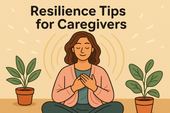
Resilience Tips for Caregivers: How to Stay Strong While Caring for Others
Joy isn’t the absence of pain — it’s the quiet strength to find light even in challenging times. Cultivating joy through small daily moments restores balance, releases stress, and reminds you of life’s beauty. Learn how to reconnect with authentic happiness, rebuild emotional energy, and nurture your nervous system through gratitude, presence, and play. 🌿
-

Building Resilience After a Breakup: How to Heal, Rebuild, and Rise Stronger
Social connection is one of the strongest predictors of emotional resilience. During difficult times, genuine relationships act as anchors — calming the nervous system, reducing stress hormones, and helping you regain perspective. Learn how cultivating real human connection can strengthen your mind, heart, and overall well-being. 🌿
-

How to Stay Emotionally Strong During Job Loss
Your emotions are powered by brain chemistry — a delicate balance of neurotransmitters like serotonin, dopamine, and cortisol. When these chemicals work in harmony, you feel calm, focused, and resilient. Learn how daily habits, nutrition, and mindfulness can support your brain chemistry and boost emotional well-being naturally. 🌿
-
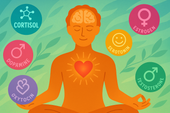
The Role of Hormones in Emotional Stability: How Your Chemistry Shapes Your Calm
Hormones shape more than your body — they shape your emotions, resilience, and sense of calm. From cortisol to serotonin, these chemical messengers influence how you react to stress, connect with others, and recover from challenges. Learn how to balance your hormones naturally to build lasting emotional stability and harmony within. 💫
-

Mitochondria and Emotional Energy: The Cellular Power Behind Your Mood
Breathwork is one of the most powerful tools for emotional regulation and cellular balance. Through intentional breathing, you can calm your nervous system, increase oxygen flow to the brain, and even support mitochondrial energy. Learn how conscious breathing connects body and mind — transforming stress into presence and emotional strength. 🌿
-

Inflammation and Its Impact on Mood Resilience: The Silent Link Between Body and Mind
Inflammation doesn’t just affect the body — it impacts the mind. Chronic inflammation alters brain chemistry, depletes serotonin, and makes emotional recovery harder. Learn how calming inflammation through nutrition, mindfulness, and sleep can restore balance, resilience, and a renewed sense of emotional strength. 💫
-
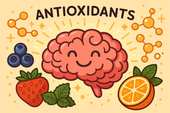
How Antioxidants Protect Emotional Well-being: The Hidden Link Between Oxidative Stress and Mental Health
Antioxidants do more than protect your body — they defend your mind. By neutralizing oxidative stress, antioxidants support serotonin, dopamine, and brain energy pathways that keep you calm, focused, and emotionally balanced. Discover how foods like berries, green tea, and dark chocolate nourish your brain, boost mood, and strengthen resilience from the inside out. 🌿✨
-
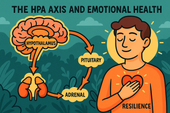
The HPA Axis and Emotional Health: The Hidden Bridge Between Stress and Mind
Neuroplasticity — the brain’s ability to rewire and adapt — is the foundation of emotional healing and resilience. When you face stress, trauma, or change, your neural pathways can reshape themselves to support new patterns of calm, focus, and self-awareness. Learn how daily practices like mindfulness, therapy, and breathwork strengthen neuroplasticity to transform emotional pain into personal growth. 🌸
-
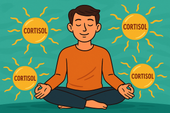
Why Cortisol Control Is Key to Resilience: Mastering Stress to Build Emotional Strength
Controlling cortisol — the body’s main stress hormone — is the secret to lasting resilience. When cortisol levels stay balanced, your mind becomes clearer, emotions steadier, and energy more sustainable. Learn how breathwork, mindset shifts, adaptogens, and daily rhythms can help you calm your stress response and build true inner strength. 🌞💪
-
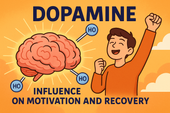
Dopamine’s Influence on Motivation and Recovery: Reigniting Drive and Balance
Healthy relationships are the foundation of emotional balance and resilience. Whether romantic, familial, or platonic, genuine connection releases dopamine, serotonin, and oxytocin — the brain’s “bonding trio” — helping us feel secure, motivated, and seen. Learn how trust, empathy, and communication not only strengthen your connections but also reshape your nervous system for deeper emotional well-being. 🌿🤝
-
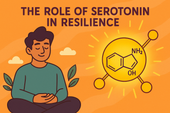
The Role of Serotonin in Resilience: How This “Mood Molecule” Shapes Emotional Strength
Serotonin — often called the “resilience molecule” — plays a vital role in how we handle stress, regulate mood, and recover from emotional challenges. Beyond happiness, this powerful neurotransmitter helps balance the gut-brain axis, stabilize the nervous system, and support emotional flexibility. Learn how nutrition, sunlight, mindfulness, and adaptogens can naturally boost serotonin and strengthen your emotional resilience. 🌞🧠
-
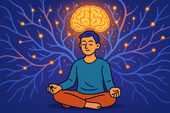
How Neuroplasticity Supports Emotional Growth: Rewiring the Brain for Resilience
Neuroplasticity is the brain’s built-in power to grow, adapt, and heal — and it’s the foundation of emotional transformation. Every mindful breath, compassionate act, or reframed thought strengthens new neural pathways that support resilience and self-awareness. Learn how your brain rewires through daily habits, helping you turn emotional challenges into opportunities for growth and calm. 🌿
-

Tai Chi and Adaptogens for Mind-Body Balance: The Art of Harmonizing Energy and Resilience
Alchemy isn’t just an ancient science — it’s a timeless symbol of transformation and inner balance. By blending the physical and spiritual, alchemy teaches us that change begins from within. Just as metals are refined into gold, we too can transmute emotional pain, stress, and chaos into clarity and strength through mindful practice and self-awareness. 🌙✨
-
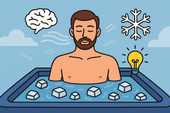
Cold Therapy and Emotional Control: Training the Mind Through the Body
Cold therapy isn’t just for athletes — it’s a tool for emotional mastery. By exposing your body to controlled cold, you train your nervous system to stay calm under stress, improving focus, mood, and resilience. This article explores the science of cold exposure, its impact on hormones and the vagus nerve, and how ice baths and cold showers can help you build emotional control, one breath at a time. 🧊🧘♂️
-

How Music Influences Emotional Recovery: The Healing Soundtrack of the Mind
Neuroplasticity — the brain’s ability to rewire and heal itself — is at the heart of emotional recovery. Through mindful habits, music, therapy, and consistent mental stimulation, your brain can form new connections that support resilience and well-being. Discover how neuroplasticity turns pain into growth, helping you rebuild balance, focus, and emotional strength. 🌿
-
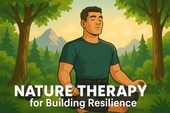
Nature Therapy for Building Resilience: Reconnecting With the Healing Power of the Earth
Nature therapy helps rebuild emotional resilience by reconnecting you with the healing rhythms of the Earth. From forest walks to sunlight exposure, nature restores balance to your nervous system, lowers stress hormones, and teaches emotional adaptability. Learn how spending time outdoors can enhance mental clarity, calm anxiety, and awaken your natural capacity to heal. 🌞
-
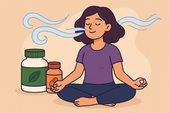
Breathwork Techniques That Pair with Supplements: The Ultimate Synergy for Stress Relief and Mental Clarity
Breathwork and supplements create a powerful mind-body synergy for stress relief, focus, and energy. By combining intentional breathing with adaptogens, nootropics, and calming nutrients, you can naturally regulate cortisol, sharpen mental clarity, and boost emotional balance. This guide explores the best breathwork techniques and supplement pairings to help you feel centered, calm, and energized from the inside out. 🌿

















































